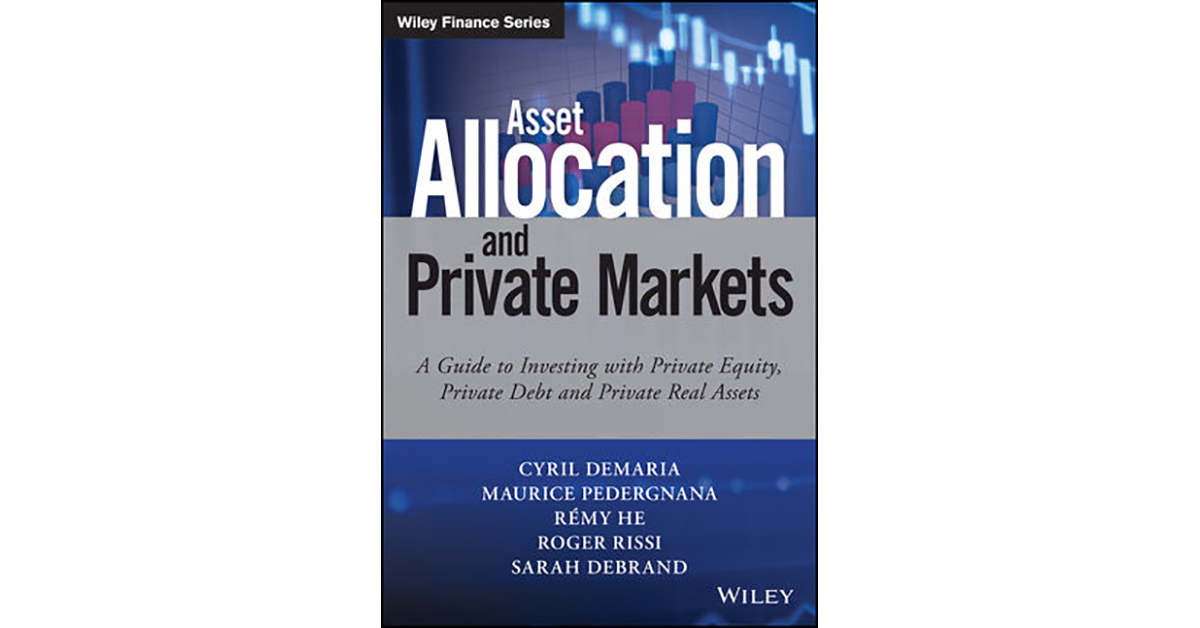[ad_1]
Asset Allocation and Private Markets: A Guide to Investing with Private Equity, Private Debt, and Private Real Assets. 2021. Cyril Demaria, Maurice Pedergnana, Rémy He, Roger Rissi, and Sarah Debrand. John Wiley & Sons.
Private market (PM) investing, according to the authors of Asset Allocation and Private Markets, entails some noteworthy challenges. For instance, analyzing returns is problematic, owing to stale pricing that arises from relatively illiquid trading.
The task is further complicated by the difficulty of calculating correlations between private and public asset returns. Fund managers can game internal rate of return (IRR) calculations through the timing of company sales or by piling debt onto companies in order to pay large dividends. Also, volatility is a poor proxy for risk in PMs. Rebalancing is harder to implement than in public markets. Secondary markets in private assets are not reliable venues for disposing of holdings; in 2008–2009, discounts to net asset value soared to 50% for leveraged buyout funds and more than 70% for venture capital funds. Fees are higher than those for public investments. Factor analysis is inapplicable because of the sparsity of trading activity.
Many endowments and foundations seeking to participate in private markets are disadvantaged by their lack of scale and limited expertise. Investors contemplating involvement in PMs should not even think about market timing. Additional hurdles include informational asymmetries; less stringent disclosure requirements than in public markets, with auditing not being mandatory in some cases; and limited regulatory oversight.
The authors do point out some compensating benefits of PM investing. They present data showing that private equity has historically outperformed public equity, on average, and argue that the edge is not disappearing, despite increased capital flows into the asset class and reduced market inefficiencies. Furthermore, private markets provide pure plays on certain industries to which investors can obtain public market exposure only through large conglomerates. In addition, private markets permit wider geographical diversification than their public counterparts.
As suggested by its title, this book deals extensively with the critically important issue of asset allocation, viewed in the full context of both public and private markets. Drawing on a combination of academic and practitioner experience, the authors lay out a process for determining the investor’s horizon and risk appetite. This is followed by instructions for structuring multiple potential investment programs and characterizing each by its expected performance and the probability of achieving it. The authors supply especially useful analysis of the challenges of benchmarking PM performance. This includes a detailed discussion of the relative merits of three metrics — IRR, multiple of invested capital, and public market equivalent. They also offer a practical approach to diversification within a PM category.
It is unthinkable that an institution considering taking the plunge into private market investing would be aware of Asset Allocation and Private Markets and not diligently study its content.
Even investors who operate exclusively in public markets can benefit from the book’s thoughtful and sometimes unconventional takes on a variety of topics. For example, the authors make a case against the frequent claim that investors can do as well by buying public securities on margin as they can by investing in leveraged buyout funds. They dispute the notion that the endowment model popularized by the late David Swensen is broken. Sustainability indexes, they maintain, underperform conventional indexes, with higher risk. The authors even take issue with the concept of market capitalization, arguing that a company’s value is not equivalent to shares outstanding times price per share. Readers may not come away persuaded in every instance, but their thinking will have been sharpened on a number of essential investment topics.
If you liked this post, don’t forget to subscribe to the Enterprising Investor.
All posts are the opinion of the author. As such, they should not be construed as investment advice, nor do the opinions expressed necessarily reflect the views of CFA Institute or the author’s employer.
Image credit: ©Getty Images / Witthaya Prasongsin
Professional Learning for CFA Institute Members
CFA Institute members are empowered to self-determine and self-report professional learning (PL) credits earned, including content on Enterprising Investor. Members can record credits easily using their online PL tracker.
[ad_2]
Image and article originally from blogs.cfainstitute.org. Read the original article here.


